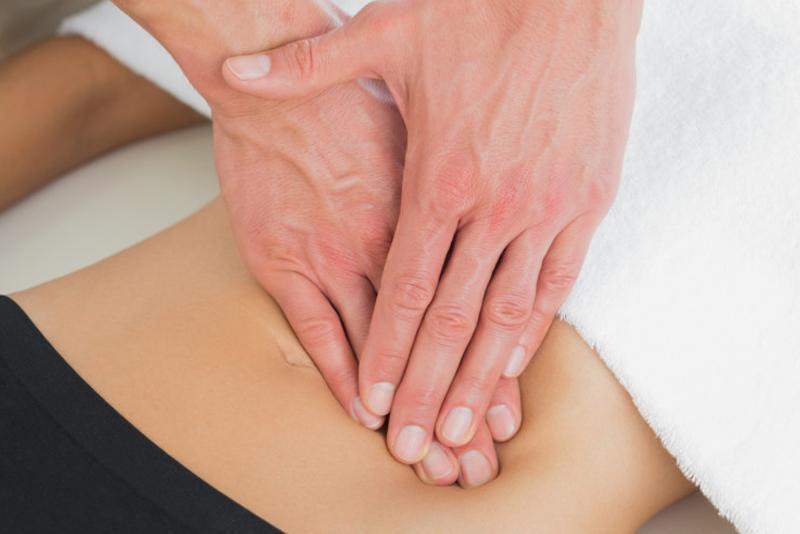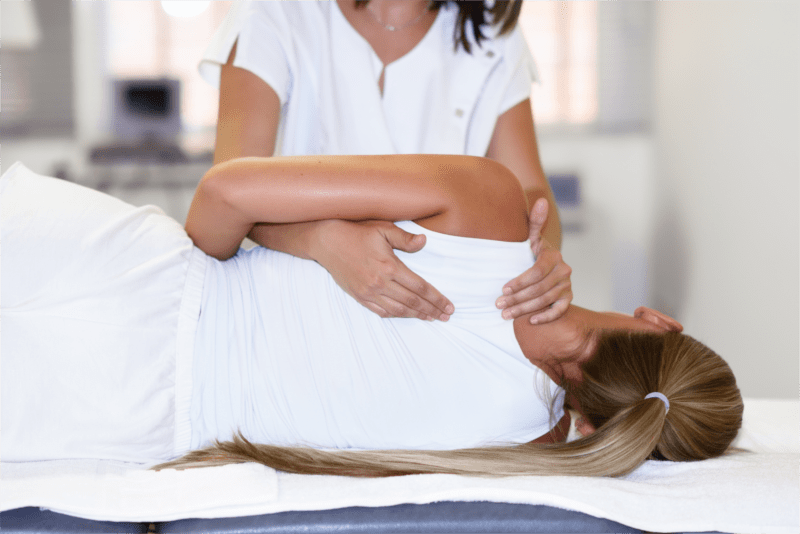Specialities
Being injured and refusing to get help, is. So, book your appointment with
a PT today.

Visceral Manipulation
Have you ever considered what happens to your abdominal organs when you bend forward at the waist? This is a movement that is evaluated during a course of physical therapy for low back pain. Most physical therapists are primarily focused on the movement of the spine, pelvis, muscles and nerves. But, when your skeletal body moves, your organs (viscera) move as well.

Neural Manipulation
“Neural” refers to the nervous system of the body, which includes the brain, spinal cord and peripheral nerves. This delicate system acts as a communication highway throughout the body, and when it is not operating properly, pain and loss of function can result. Neural Manipulation (NM) identifies local nerve restrictions and fixation while examining their effects on the rest of the body.

Craniosacral therapy
Craniosacral therapy (CST) is a gentle hands-on technique that uses a light touch to examine membranes and movement of the fluids in and around the central nervous system. Relieving tension in the central nervous system promotes a feeling of well-being by eliminating pain and boosting health and immunity.

Stroke Rehabilitation
Rehabilitation programs are critical in helping patients regain lost skills, relearn tasks, and work to be independent again. In many cases, there is great potential for the brain to recover. With diligent rehabilitation, these prospects can get even better. Even if major neurological deficits do not improve, the patients’ functioning can improve as they learn ways to compensate for their problems.

Fall Assessment
As people get older it is inevitable that they will be at a greater risk of falling. This is also true for individuals who have various neurological conditions. Falls are the major cause of injury with people over the age of sixty-five and at synapse, our specialist physiotherapists believe that it is important to minimise the risk of falling as much as possible by designing an individualised falls prevention programme.

Pre/post-surgical Rehabilitation
It is important to be as strong and mobile as possible up until the day of surgery. Your therapist will provide you with the proper exercises and stretches so that you will be better prepared for after surgery, which will help speed up your recovery. After surgery, your therapist will perform an evaluation on your functional movements, range of motion, strength, and soft tissue quality.

Neurological disorders
Neurological disorders are diseases of the central and peripheral nervous system. In other words, the brain, spinal cord, cranial nerves, peripheral nerves, nerve roots, autonomic nervous system, neuromuscular junction, and muscles. These disorders include epilepsy, Alzheimer disease and other dementias, cerebrovascular diseases including stroke, migraine and other headache disorders, multiple sclerosis, Parkinson’s disease, neuroinfectious, brain tumours, traumatic disorders of the nervous system due to head trauma, and neurological disorders as a result of malnutrition.

Osteoarthritis
Osteoarthritis (OA) is the most common form of arthritis. It is called degenerative joint disease (DJD) or “wear and tear” arthritis. It occurs most frequently in the hands, hips, and knees. With OA, the cartilage within a joint begins to break down and the underlying bone begins to change. These changes usually develop slowly and get worse over time. OA can cause pain, stiffness, and swelling. In some cases, it also causes reduced function and disability; some people are no longer able to do daily tasks or work.

Bursitis
Swelling and inflammation near a joint may be a sign of bursitis, a condition that involves build-up of liquid and inflammation in a bursa sac that cushions a joint. People can lower the risk of bursitis by gradually strengthening and stretching the muscles around the joints and taking regular breaks from repetitive motion that might irritate bursae. Prolonged time resting on the elbows or kneeling should be avoided; if it cannot be avoided, wearing cushioned elbow and knee pads can help protect the bursae. Comfortable, supportive, low-heeled shoes can help prevent bursitis in the foot.

Vestibular Rehabilitation
Vestibular rehabilitation is an exercise-based program, designed by a specialty-trained vestibular physical therapist, to improve balance and reduce problems related to dizziness.

TMJ dysfunction
The temporomandibular joint is the joint that connects your jaw to your skull. When this joint is injured or damaged, it can lead to a localized pain disorder called temporomandibular joint (TMJ) syndrome or temporomandibular disorder (TMD).
